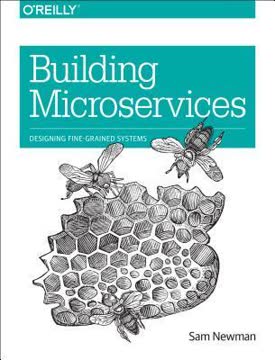Key Takeaways
1. Agile testing integrates quality assurance throughout the development process
"Agile testing" isn't just testing on an agile project. Some testing approaches, such as exploratory testing, are inherently agile, whether it's done an agile project or not.
Continuous quality focus. Agile testing shifts the traditional paradigm of testing as a separate phase to an integrated approach where testing activities occur throughout the development cycle. This continuous focus on quality helps identify and address issues early, reducing the cost and time associated with fixing defects later in the process.
Collaborative effort. In agile testing, testers work closely with developers, business analysts, and customers from the beginning of each iteration. This collaboration ensures that everyone understands the requirements, acceptance criteria, and potential risks associated with each feature. Testers participate in planning sessions, daily stand-ups, and retrospectives, providing valuable insights and feedback throughout the development process.
Adaptability and flexibility. Agile testing emphasizes adaptability to changing requirements and priorities. Testers must be able to quickly adjust their strategies and test plans as new information becomes available or as the project evolves. This flexibility allows the team to respond to customer needs more effectively and deliver higher-quality software incrementally.
2. The whole-team approach to quality is essential for agile success
"The whole-team approach means everyone takes responsibility for delivering high-quality software that delights customers and makes the business more profitable."
Shared responsibility. In agile development, quality is not the sole responsibility of testers or a separate QA department. Instead, the entire team, including developers, testers, business analysts, and product owners, shares the responsibility for delivering high-quality software. This shared ownership fosters a culture of quality and encourages everyone to think about testing and potential issues throughout the development process.
Cross-functional collaboration. The whole-team approach promotes cross-functional collaboration, where team members with different skills and perspectives work together to solve problems and improve the product. This collaboration can lead to:
- More effective test planning and execution
- Improved test coverage through diverse perspectives
- Faster issue resolution through shared knowledge
- Enhanced overall product quality
Continuous improvement. By involving the entire team in quality assurance, agile projects benefit from a broader range of ideas and experiences. Team members can share best practices, learn from each other, and continuously improve their processes and skills. This collective growth contributes to better software quality and increased team productivity over time.
3. Agile Testing Quadrants provide a comprehensive framework for test planning
"Use the quadrants as a map to get started. Experiment, and use retrospectives to keep improving your efforts to guide development with tests and build on what you learn about your product through testing."
Balanced test coverage. The Agile Testing Quadrants framework helps teams ensure comprehensive test coverage by categorizing tests into four quadrants:
- Technology-facing tests that support the team (e.g., unit tests)
- Business-facing tests that support the team (e.g., functional tests)
- Business-facing tests that critique the product (e.g., usability tests)
- Technology-facing tests that critique the product (e.g., performance tests)
Strategic test planning. By using the quadrants, teams can strategically plan their testing efforts to address different aspects of quality. This framework helps identify gaps in test coverage and ensures that both technical and business perspectives are considered. Teams can use the quadrants to:
- Prioritize testing activities based on project needs
- Allocate resources effectively across different types of tests
- Identify appropriate tools and techniques for each quadrant
Continuous improvement. The Agile Testing Quadrants framework encourages teams to regularly evaluate and improve their testing processes. Through retrospectives and ongoing experimentation, teams can refine their approach to each quadrant, adapting to changing project requirements and incorporating new testing techniques as needed.
4. Business-facing tests drive development and ensure customer satisfaction
"Business-facing tests are also called 'customer-facing,' 'story,' 'customer,' and 'acceptance' tests. The term 'acceptance test' is particularly confusing, because it makes some people think only of 'user acceptance tests.'"
Requirements clarification. Business-facing tests help clarify and refine requirements by translating user stories and acceptance criteria into concrete examples and test cases. This process encourages collaboration between developers, testers, and business stakeholders, ensuring a shared understanding of the desired functionality.
Driving development. By writing business-facing tests before coding begins, teams can practice Acceptance Test-Driven Development (ATDD) or Behavior-Driven Development (BDD). This approach helps:
- Focus development efforts on delivering value to the customer
- Provide clear guidelines for implementing features
- Reduce the risk of building unnecessary or incorrect functionality
Customer satisfaction. Business-facing tests serve as a communication tool between the development team and customers. By involving customers in the creation and review of these tests, teams can:
- Align development efforts with customer expectations
- Demonstrate progress and gather feedback early in the development process
- Build confidence in the delivered product's quality and functionality
5. Technology-facing tests support the team and improve code quality
"Technology-facing tests that support the team form the foundation of agile development and testing."
Code quality improvement. Technology-facing tests, such as unit tests and component tests, help developers write better code by encouraging:
- Modular and testable design
- Early detection of bugs and integration issues
- Confidence in refactoring and making changes
Fast feedback. These tests provide rapid feedback to developers, allowing them to catch and fix issues quickly. The fast feedback loop enables:
- Continuous integration and delivery
- Reduced debugging time
- Increased development speed and productivity
Technical debt management. By maintaining a comprehensive suite of technology-facing tests, teams can:
- Identify and address technical debt early
- Ensure code maintainability over time
- Support continuous refactoring and improvement of the codebase
6. Continuous integration and automation are critical for agile testing
"Automated builds, deployment, version control, and monitoring also go a long way toward mitigating risk and making your development process more consistent."
Rapid feedback. Continuous integration and automation enable teams to receive rapid feedback on code changes and potential issues. This quick feedback loop allows for:
- Early detection and resolution of integration problems
- Faster identification of regressions
- Improved overall code quality
Consistency and reliability. Automation of builds, deployments, and testing processes ensures consistency across different environments and reduces the risk of human error. Benefits include:
- Reproducible builds and deployments
- Consistent test execution
- Reliable release processes
Efficiency and productivity. By automating repetitive tasks, teams can focus on higher-value activities such as:
- Exploratory testing
- Feature development
- Process improvement
- Customer collaboration
7. Exploratory testing complements automated tests to ensure product quality
"Exploratory testing is characterized by the degree to which the tester is under her own control, making informed choices about what he or she is going to do next, and where the last outcome of the last activity consciously informs the next choice."
Human insight. Exploratory testing leverages human creativity, intuition, and critical thinking to uncover issues that automated tests might miss. This approach allows testers to:
- Identify usability problems
- Discover unexpected behaviors or edge cases
- Evaluate the overall user experience
Flexibility and adaptability. Unlike scripted tests, exploratory testing allows testers to adapt their approach based on what they learn about the system. This flexibility enables:
- Quick investigation of potential issues
- Discovery of new test scenarios
- Efficient use of testing time
Complementary to automation. While automation is crucial for regression testing and repetitive tasks, exploratory testing complements automated tests by:
- Providing a different perspective on the product
- Uncovering issues that might be difficult to automate
- Validating the effectiveness of automated test suites
8. Overcoming cultural and organizational barriers is key to agile testing adoption
"Using the values from the Manifesto to guide us, we strive to deliver small chunks of business value in extremely short release cycles."
Mindset shift. Adopting agile testing requires a significant shift in mindset for many organizations. Key changes include:
- Embracing continuous testing throughout the development process
- Valuing collaboration over strict role separation
- Focusing on delivering value rather than following rigid processes
Organizational support. Successful agile testing adoption requires support from all levels of the organization. Important factors include:
- Leadership commitment to agile principles
- Investment in training and tools
- Empowering teams to make decisions and self-organize
Continuous improvement. Overcoming barriers to agile testing is an ongoing process that requires:
- Regular retrospectives to identify and address challenges
- Openness to experimentation and learning from failures
- Gradual implementation of changes to allow for adjustment and refinement
9. An effective test automation strategy balances different types of tests
"Use the quadrants to help you identify the different types of automation tools you might need for each project, even for each iteration."
Test pyramid approach. An effective automation strategy follows the test pyramid concept, which emphasizes:
- A large base of fast, reliable unit tests
- A smaller layer of integration and API tests
- A small number of end-to-end UI tests
Tool selection. Choosing the right automation tools is crucial for success. Consider factors such as:
- Team skills and expertise
- Project requirements and constraints
- Integration with existing tools and processes
- Maintainability and scalability of test suites
Continuous refinement. Test automation strategies should be regularly evaluated and improved. This involves:
- Analyzing the effectiveness of existing automated tests
- Identifying areas where automation can provide the most value
- Adapting the strategy to changing project needs and new technologies
Last updated:
Review Summary
Agile Testing receives mixed reviews, with an average rating of 3.82/5. Readers appreciate its comprehensive coverage of agile testing principles and practices, particularly the four-quadrant testing model. Many find it valuable for understanding the tester's role in agile environments. However, criticisms include excessive length, repetition, and outdated information. Some readers feel it lacks focus and contains too many anecdotes. Despite these shortcomings, it's generally recommended for testers transitioning to agile methodologies or seeking to improve their understanding of agile testing concepts.
Similar Books










Download PDF
Download EPUB
.epub digital book format is ideal for reading ebooks on phones, tablets, and e-readers.




